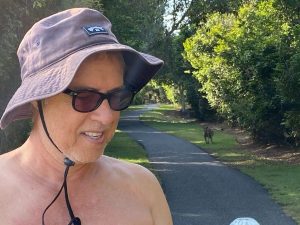01:00 Whatever Happened to the Scandal That Derailed Kevin McCarthy’s Last Bid for Speaker? https://nymag.com/intelligencer/2018/05/the-forgotten-scandal-that-derailed-mccarthys-speakership.html
04:00 Harvard Professor: How Women Compete For Partners https://www.youtube.com/watch?v=_4jKAgYL0gg
14:30 Who are the upper class livestreamers?
22:00 How to compete in the attention economy, https://decoding-the-gurus.captivate.fm/episode/interview-with-neil-levy-on-intellectual-virtue-signalling
30:00 Virtue Signalling Is Virtuous, https://lukeford.net/blog/?p=146676
39:30 Lex Fridman’s reading list for 2023, https://www.patreon.com/DecodingTheGurus
44:00 Tom Clancy is excellent, https://en.wikipedia.org/wiki/Tom_Clancy
57:00 David Pizarro on moral situationism, https://www.verybadwizards.com/9
1:29:30 Prison rape and race
1:49:00 A Person-Centered Approach to Moral Judgment, https://lukeford.net/blog/?p=146684
1:54:00 The Left vs Religion
2:25:00 Cum Town – Steven Seagal
Virtual Pilgrim comments:
Luke tries to make a case that things are better now than in the past. Who’s he trying to convince? As the sentient have presumably noticed, the United States is in crisis, the country’s problems are profound, intrinsic, without solution, and worsening. When a population reaches the point of despair, even desperation, when it sees a darkening future for itself and its children, people yearn for a strong man who will forcibly put things right. Yet it is unlikely that helicopters of Marines from Quantico will descend on the White House and announce the dictatorship of some general. Military officers are too well paid and comfortable to worry about the country. It is hard to imagine an American Mussolini. Trump is a caricature and no one else comes to mind. Yet “unrest” –less euphemistically, “chaos” on the order of Mr. Floyd’s massive riots, is possible. We have seen it. We can see it again.
Consider America today. By comparison with Japan, China, Korea, it is a barbarity, a dumpster, an asylum, an abattoir, an astonishment. San Francisco loses conventions because of needles and excrement on the sidewalks. Almost weekly we see multiple shootings in stores, high schools and, now, grade schools. Murders of whites by blacks run at thirty a month, the news being suppressed. In cities across the country crime is out of control, the tax bases moving out, bail abolished so criminals are freed in hours. Stores leave to escape undiscouraged shoplifting and robbery. Seven hundred homicides a year in Chicago, 300 in Baltimore, and at least twice as many shot but survive, similar numbers in a dozen cities. For practical purposes, law does not exist in these ungovernable enclaves. Sexual curiosities, once called perversions, flourish with American embassies hoisting flags in support of transsexualism. Mobs topple historical statues. Many tens of thousands live on sidewalks and a hundred thousand a year die of opioid overdoses. The country drops math requirements and English grammar in schools, AP courses, and SATs as racist. The economy declines, jobs have left for other climes, medical care is beyond most people’s means, government is corrupt and incompetent, and wars are unending. There is actual hatred between racial, political, and regional groups. Ominously, gun sales are up.
Luke keeps making the statement that every group thinks they are better than other groups, which reinforces my claim that diversity will tear a country apart and is not a strength. Conservatives and liberals are both committed to the idiotic belief that different groups need to come together and unify. Conservatives believe that if it was not for the incendiary liberal rabble rousers that diverse groups would naturally come together under the Constitution. They believe that left-wing radicals are dividing us along racial lines. Conservatives and liberals will never face the fact that race itself divides people and doesn’t need any help from anyone. Racial division is naturally built in.
Reasonable & Responsible writes:
1:27:19 The influence of the situation on behavior should indeed not be minimized or underestimated. Nonetheless, are there not at least /some/ people who /across/ very different situations at least fairly consistently demonstrate certain distinct behavioral traits/characteristics/patterns– whether considerate, pro-social and ethical or the opposite?
When running late, I am far less empathic and considerate than I am absent such pressure, but still more pleasant than some, as well as less pleasant than others, would be in the same or similar situation.
looking back at the 90s even now it still feels like an idyllic time to me where the end of history was a kind of plausible assumption. granted, i was a child, however the entire 9/11 fiasco and the wars in the wake all felt like an unnecessary controlled demolition – if you’ll pardon the expression – of a really good thing. the equity of the 90s felt squandered on bad, pugilistic investments.
when i was ‘red pilled’ in the late 00s i had friends, family, education etc. and i still imploded. everyone was kind of watching me from a distance just kind of baffled at what was going on. there are certain shocks to the system that seem to be just too great to handle; or, maybe i’m just weak internally.


